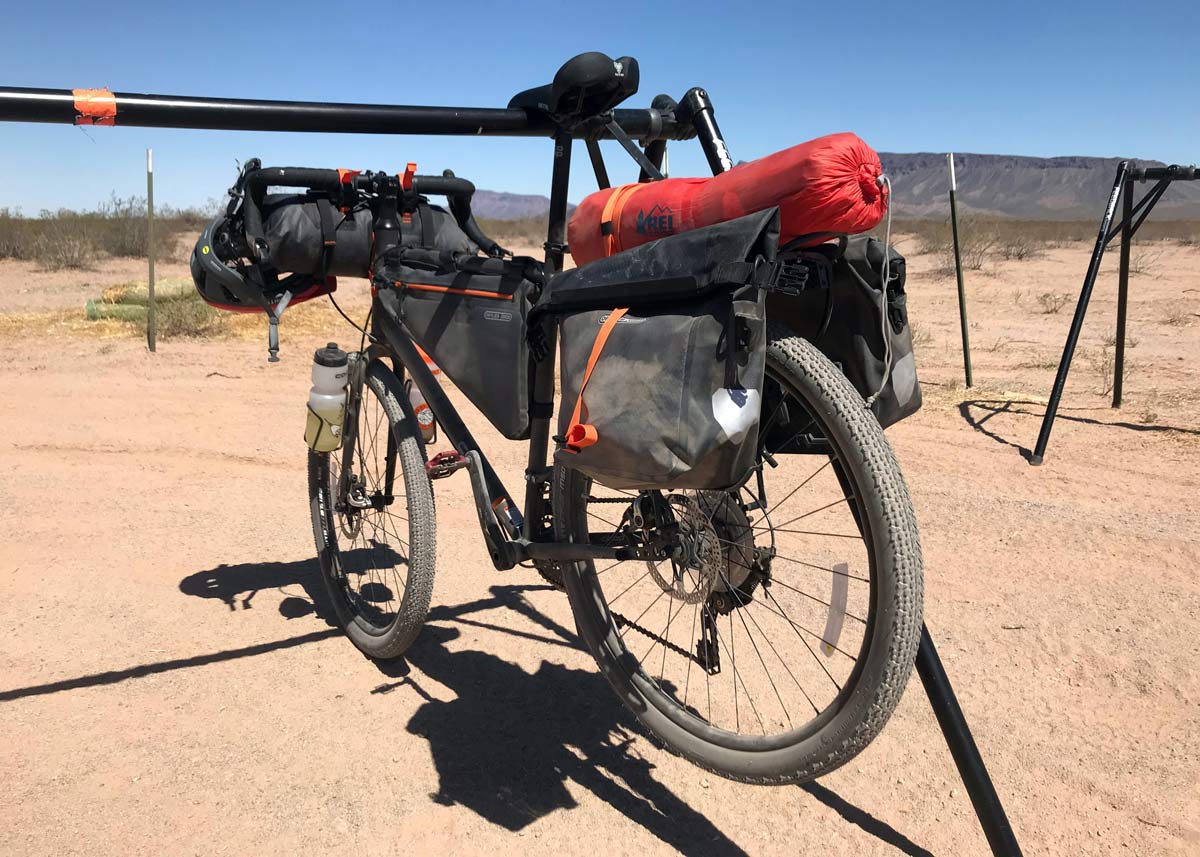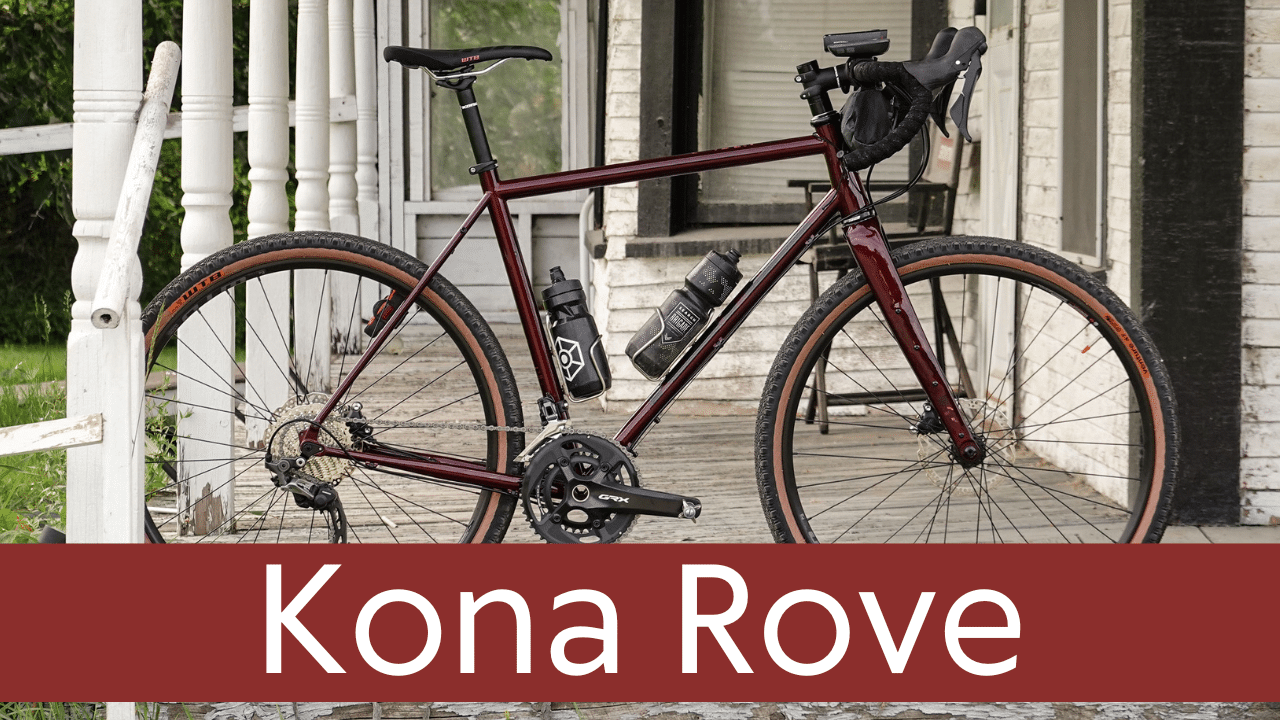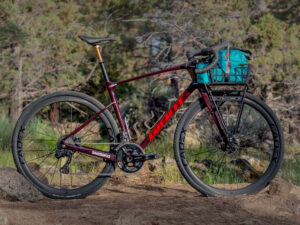Updated: 5th August 2025
The question of whether gravel bikes are suitable for longer bicycle tours receives a definitive yes. However, before you invest in a gravel bike for touring, it’s essential to understand the nuances that separate touring-ready models from their racing-oriented counterparts.
The Reality of Gravel Bikes for Touring
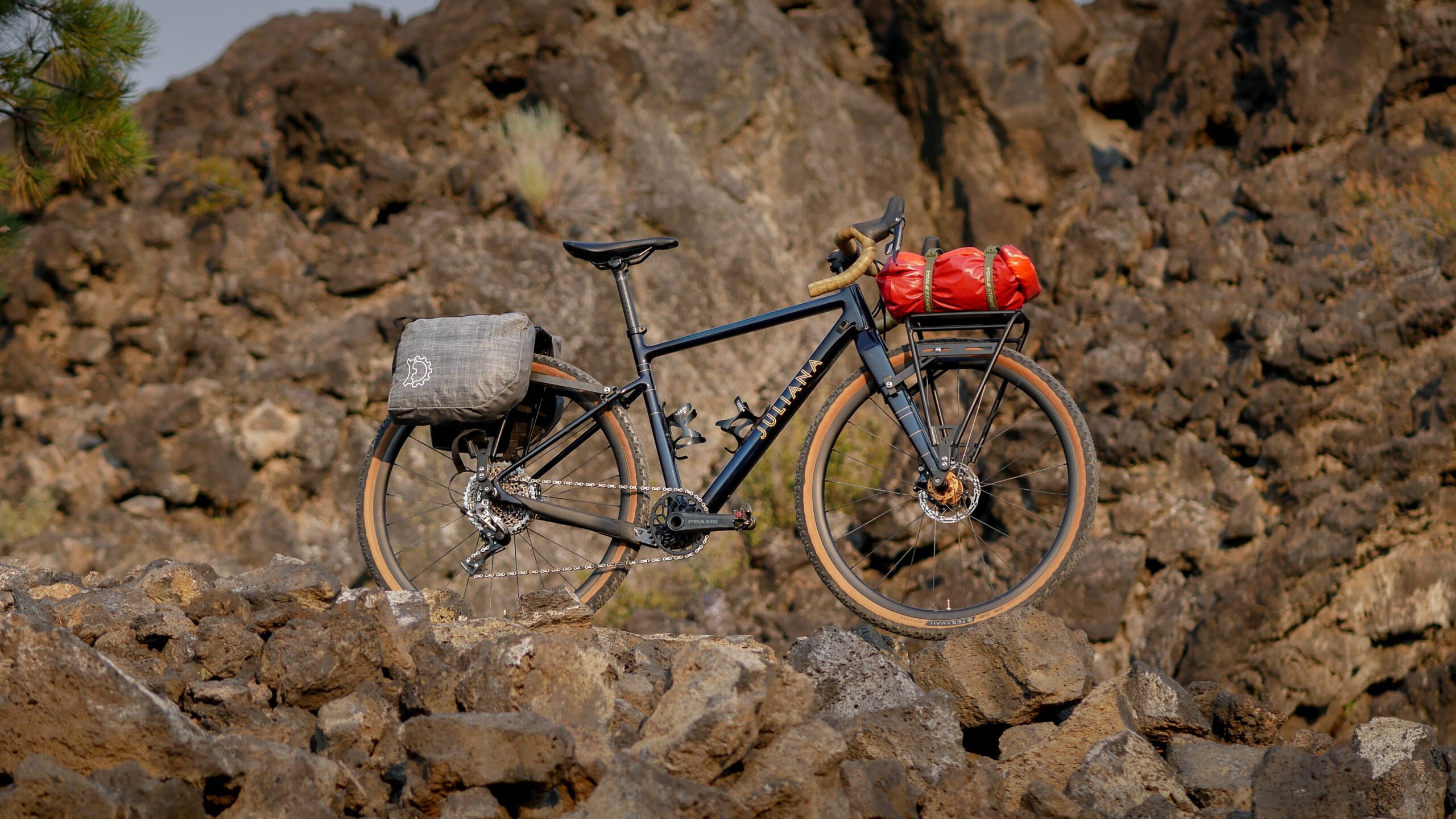
While many gravel bikes excel at touring adventures, they’re not all created equal. Success in choosing the right gravel bike for touring requires a detective’s approach to evaluating key specifications, particularly bike geometry. This fundamental design element dictates how stable, comfortable, and gear-friendly your bike will perform under load.
Build quality plays an equally crucial role in ensuring your ride feels secure and responsive, especially when loaded with touring gear. Additionally, gearing options vary dramatically across gravel bike models—some offer limited ranges that may prove inadequate for challenging terrain with a full load.
The reality is that not every gravel bike is designed for the touring lifestyle. Distinguishing between models optimized for racing versus those engineered for long-distance comfort is essential for embarking on your next grand adventure with confidence.
Why Gravel Bikes Have Gained Touring Popularity
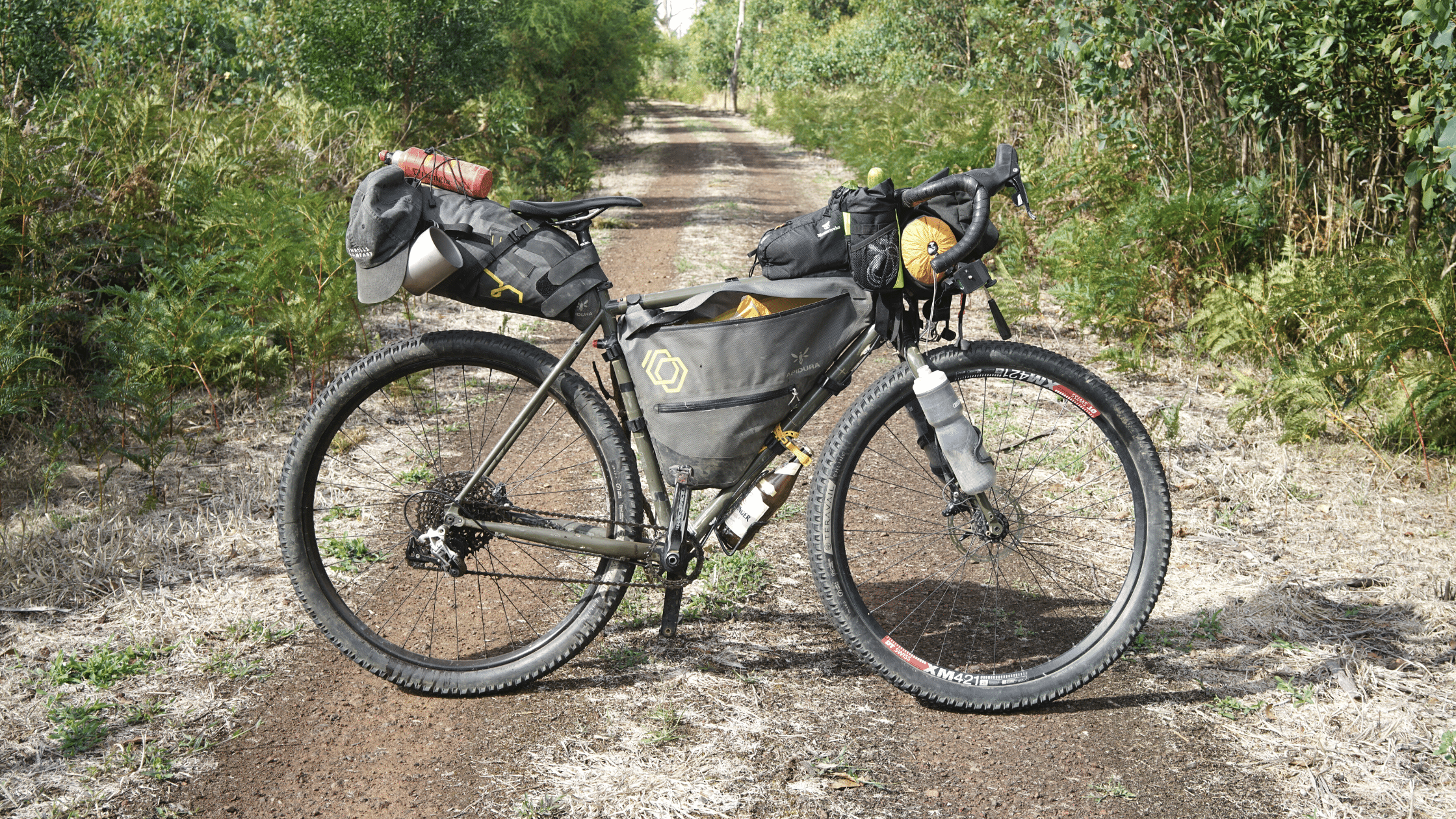
Gravel bikes have surged in popularity among touring cyclists for compelling reasons. They offer unmatched versatility, enabling riders to venture beyond traditional routes and explore both off-road trails and paved surfaces. This adaptability makes them an increasingly attractive alternative to traditional touring bikes for many cyclists.
Before examining the distinctions between touring and gravel bikes, consider this crucial question: What type of terrain will dominate your journeys? Will your adventures consist primarily of gravel paths and off-road trails with occasional pavement, or do you plan to stick mainly to tarmac roads?
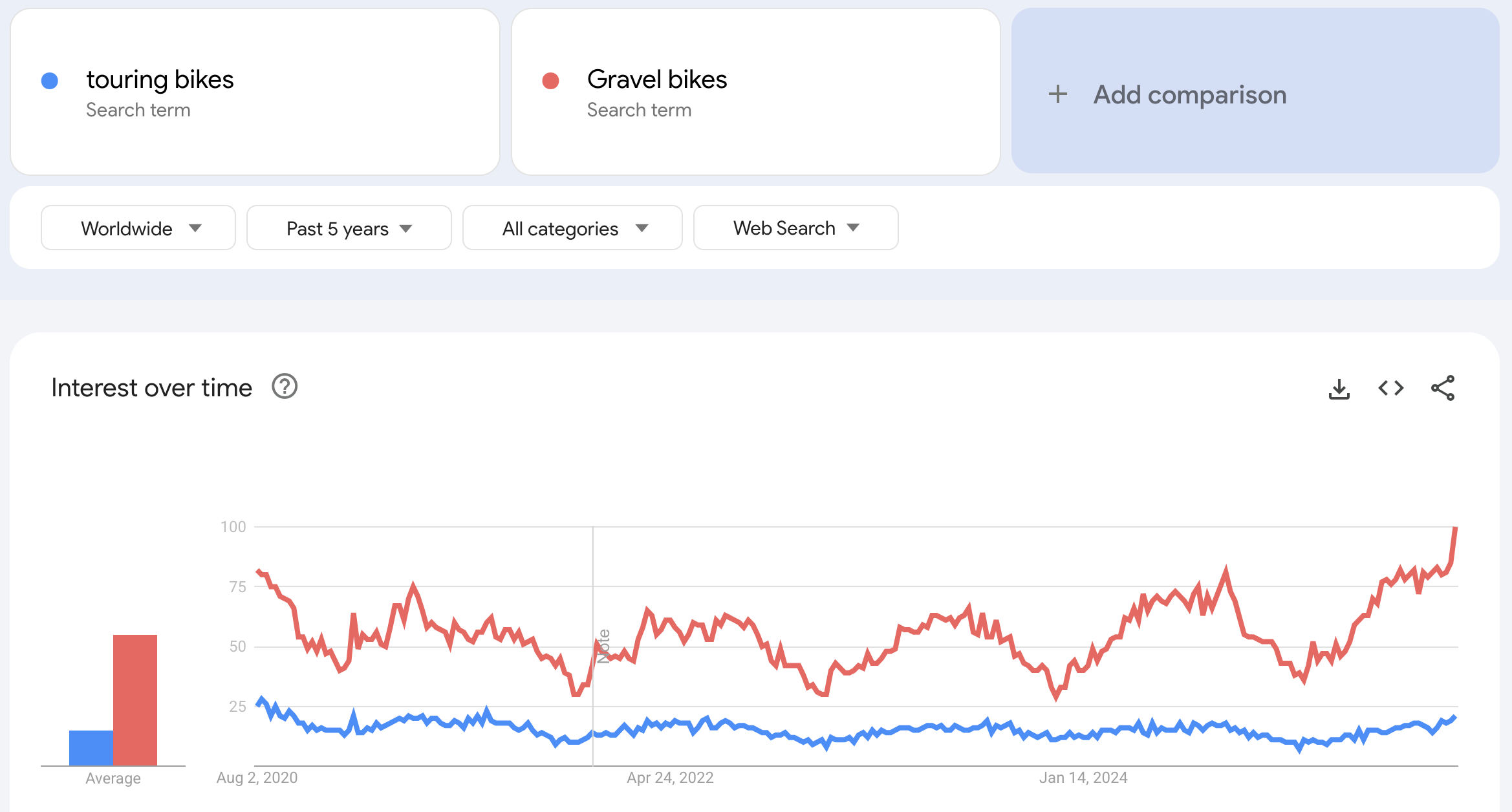
Traditional touring bikes are engineered specifically for pavement riding and renowned for their robust construction. While you can certainly mount gravel tires on a touring bike—which works reasonably well—the fundamental difference lies in geometry optimization.
Gravel bikes often feature more aggressive riding positions, similar to cyclocross bikes, which may prove uncomfortable during extended periods in the saddle. When equipped with panniers, gravel bike handling might not feel as refined as desired due to considerations like chainstay length and wheelbase—critical factors for comfortable touring experiences.
However thats the thine! Some gravel bikes are optimised as good tourers. Blurring the lines between being a gravel bike and touring bike. Which is why I created this 2 hour bike buyers masterclass which helps you discern the difference in these subtleties with gravel bikes and how diverse they are.
Consider Modern Touring Bikes
If you’re exploring the intersection of touring and gravel capabilities, you might want to examine modern touring bikes that bridge both worlds:
Our comprehensive article reveals a treasure trove of “touring bikes” that transition seamlessly into gravel biking territory. Remember, the distinction between touring and gravel bikes isn’t strictly defined—it exists on a spectrum worth exploring. Among the featured bikes, you might discover the perfect companion for your upcoming gravel touring adventure.
Understanding Gravel Bikes for Touring Applications
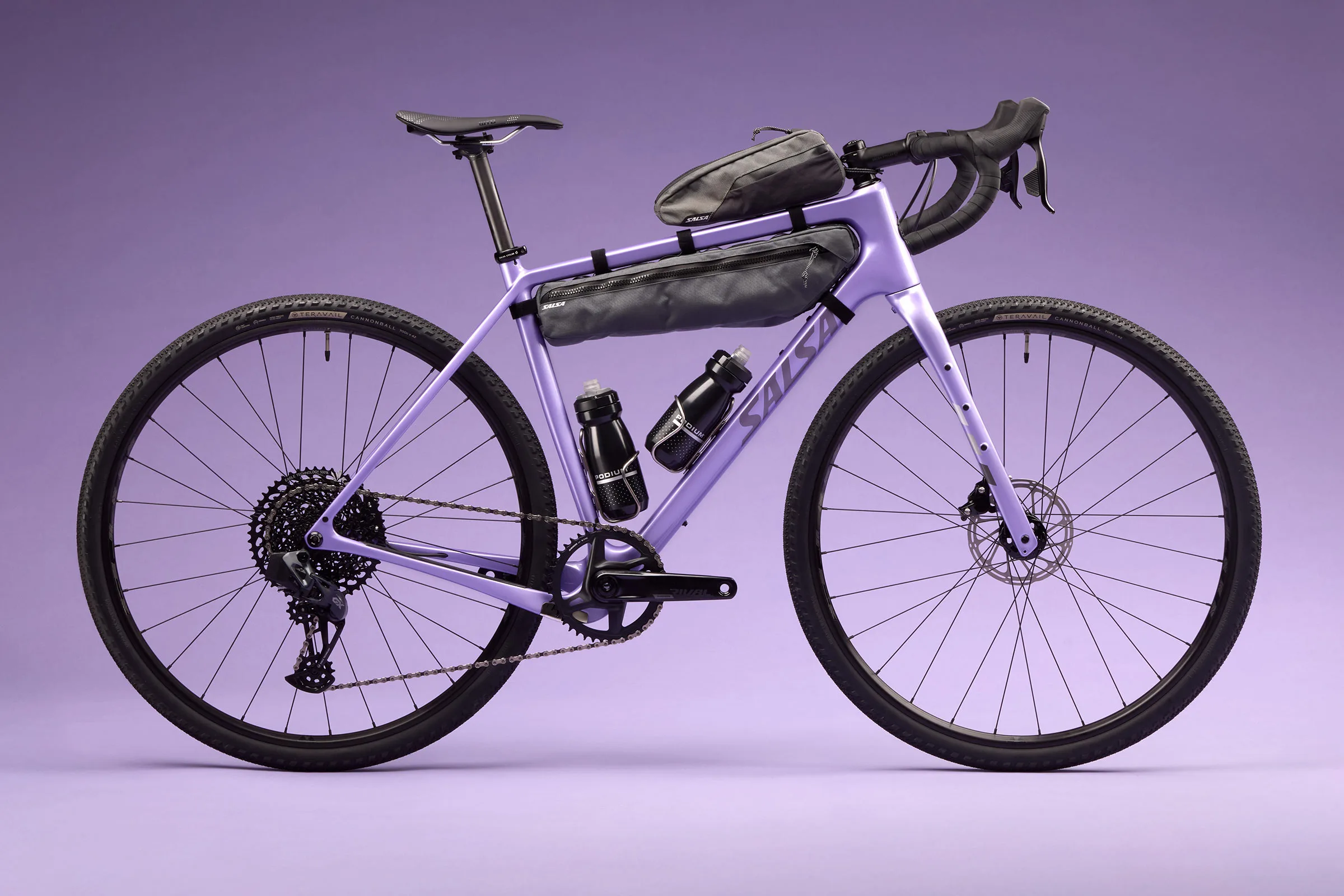
The world of touring-suitable gravel bikes encompasses fascinating variety, introducing us to the specialized category of light-touring bikes. These machines represent the best of both worlds, blending gravel bikes’ agility and adventurous spirit with traditional touring bikes’ durability and load-carrying capacity.
Light-touring bikes are engineered for cyclists who demand versatility. They’re nimble enough to handle gravel paths yet sturdy enough to carry multi-day touring essentials without the substantial weight associated with classic touring bikes. This balance is achieved through thoughtful geometry, strategic material choices, and componentry designed for both comfort and efficiency across varied terrains.
What Defines a Gravel Bike?
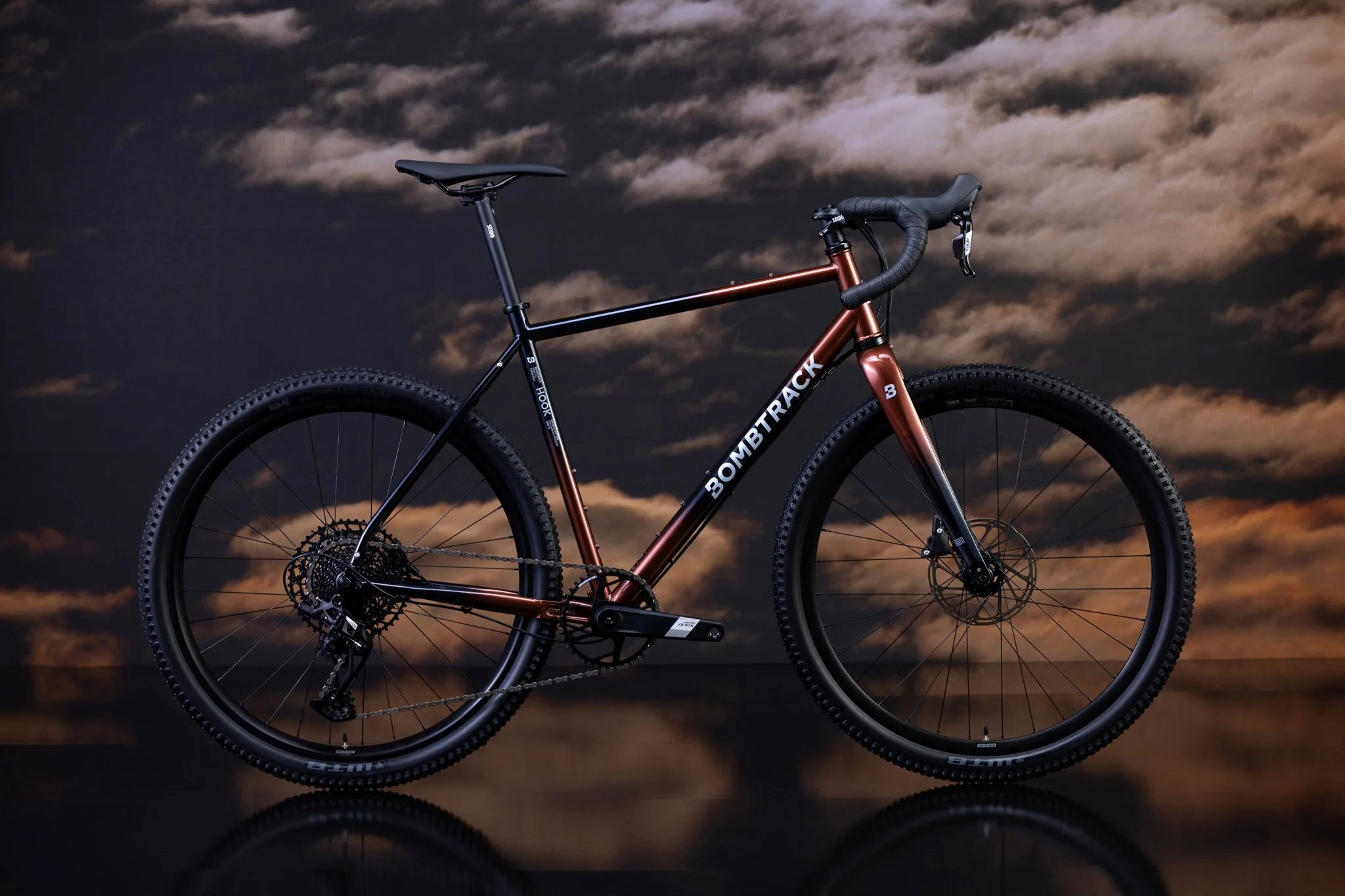
A gravel bike—often described as the hybrid offspring of mountain bikes and road bikes—is designed to conquer diverse terrains and surfaces, earning the nickname “all-road” bike. These versatile machines cater to adventure-seekers who refuse to be limited by surface conditions.
Gravel bikes combine the rugged capability to navigate trails and gravel paths (though not as extreme as dedicated mountain bike terrain) with the agility to maintain speed on tarmac roads. This fusion offers riders the best of both cycling worlds.
As the gravel bike market continues evolving, manufacturers offer increasingly specialized options tailored to specific riding preferences. Some models lean toward road cycling optimization, featuring designs prioritizing speed and pavement performance. Others inherit more mountain biking DNA, equipped to handle tougher, more challenging terrains.
Lightweight Touring Bikes: A Specialized Category
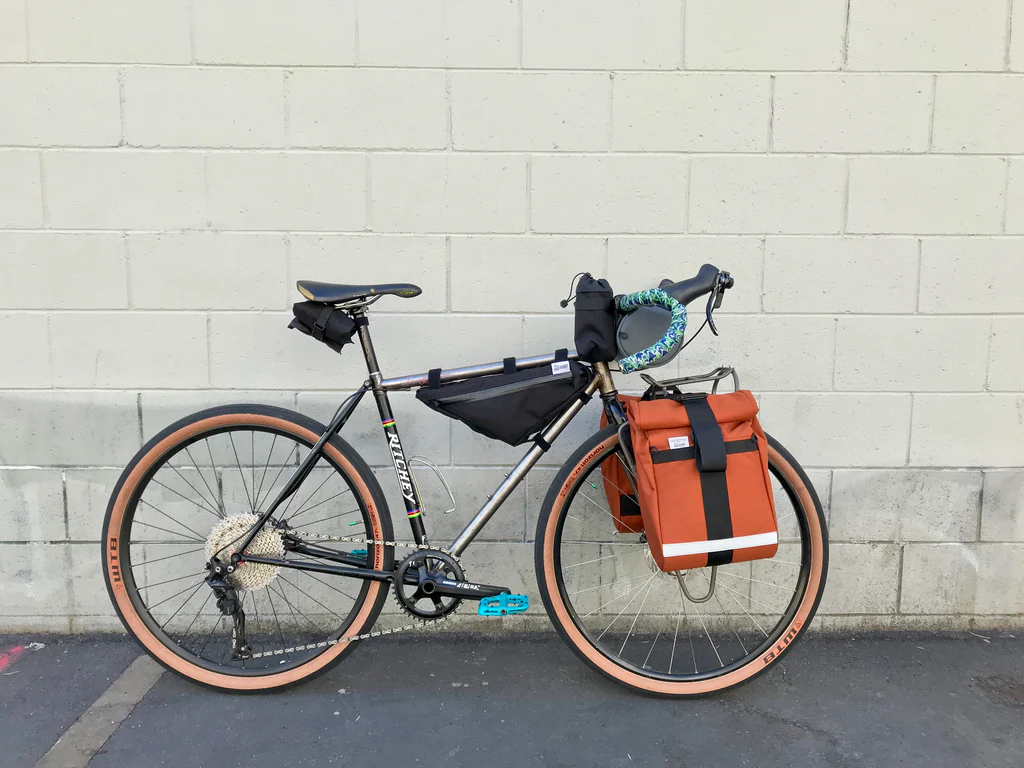
Within the gravel touring spectrum exists an intriguing niche: lightweight touring bikes. These models differ from “light-touring” bikes primarily through their construction philosophy. Lightweight touring bikes are engineered for minimal weight, often utilizing carbon fiber as their material of choice, prioritizing speed and handling ease over rugged durability expectations.
While carbon’s lightweight properties make distance coverage less demanding, it might not be the optimal choice for riders who prioritize durability above all else, especially on unpredictable terrains. Steel remains a preferred material for many touring enthusiasts due to its renowned toughness and resilience. Steel handles the inevitable bumps and scrapes of adventurous touring with unmatched steadfastness.
However, exploring carbon lightweight touring bikes offers its own rewards. They provide a unique blend of performance and agility that can significantly enhance touring experiences, particularly for riders seeking to maintain higher speeds with lighter loads. While they may not be traditional touring workhorses, they carve out their own path for those willing to trade some ruggedness for speed and sleekness.
For more information on carbon touring options and light touring bikes
Adventure Bikes and Specialized Variants
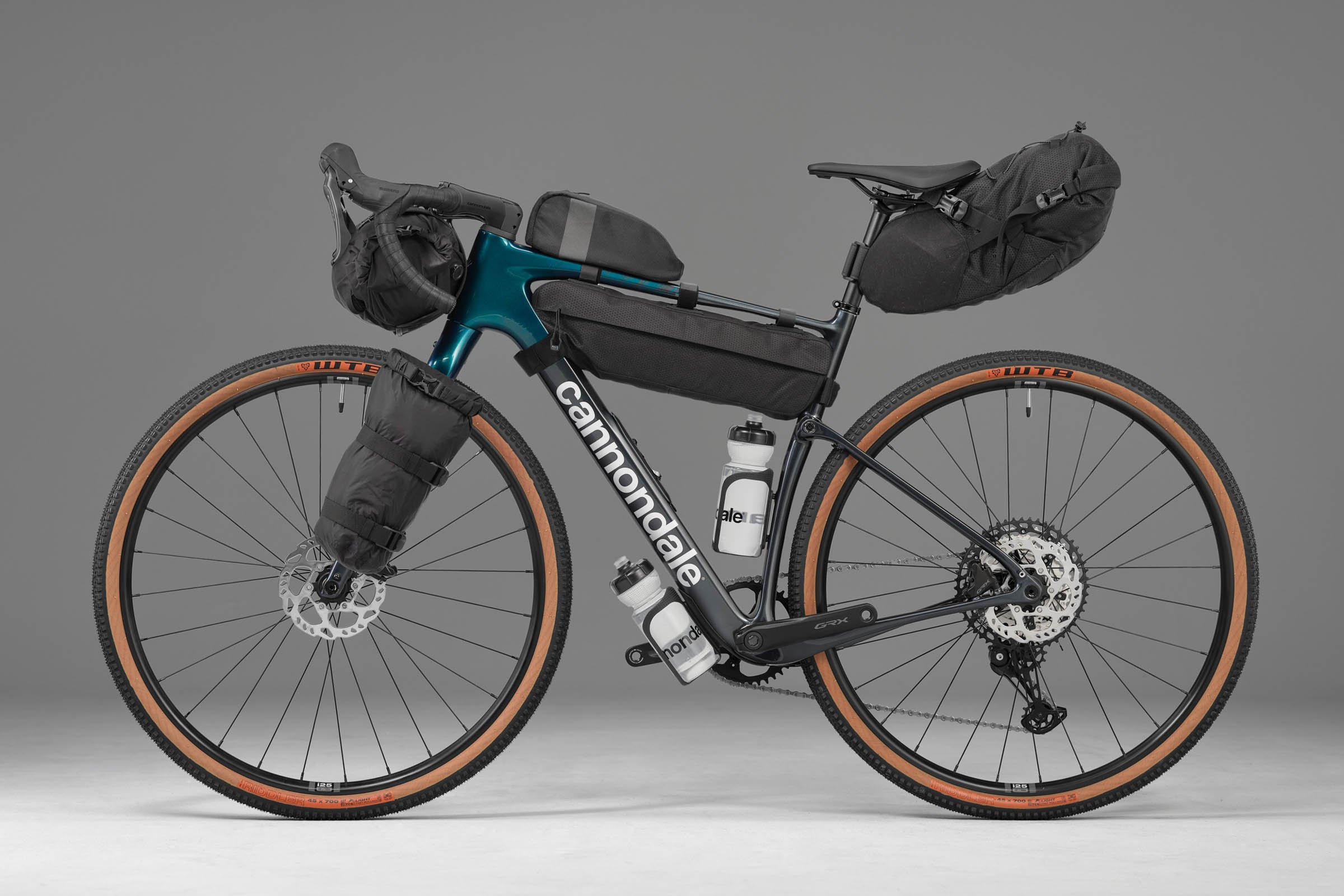
Gravel bikes’ versatility shines brightest in touring applications. Their geometry typically features more relaxed positioning compared to traditional road bikes, prioritizing comfort during long riding days. Additionally, they’re designed to accommodate extra gear, making them ideal companions for both short excursions and extensive touring adventures.
Within the diverse gravel biking ecosystem, we encounter specialized variants known as adventure bikes or bikepacking gravel bikes. These purpose-built machines are crafted specifically for bikepacking journey demands and rewards, catering to cyclists who crave exploration thrills without sacrificing extended off-road adventure practicalities.
Another compelling category includes drop bar mountain bikes—machines that merge mountain biking robustness with road cycling heritage through drop bar implementation. These bikes are celebrated for their mountain bike DNA, enhancing their ability to navigate demanding, technical landscapes. This particular niche blurs traditional bike category boundaries, demonstrating the vast possibilities that gravel bikes can unlock for adventurous riders.
Key Considerations for Touring Gravel Bikes
Selecting the optimal gravel bike for touring requires finding the perfect balance between road and mountain bike characteristics tailored to your riding preferences. While gravel bikes excel in touring roles—especially for riders planning primarily gravel path adventures—several critical aspects demand careful attention.
Geometry: The Foundation of Touring Comfort
Bike geometry is paramount when selecting a touring-capable gravel bike. It’s crucial to avoid cyclocross bikes for touring purposes due to their race-oriented geometry, including shorter chainstays, wheelbase, trail, front center, and head tube length—factors that significantly impact ride quality under load.

Consider this comparison between two distinct approaches: the Basso Palta—celebrated for aggressive, speed-focused attributes—and the Kona Rove, which proves more conducive to relaxed touring. Focusing on medium-sized frames, the Kona Rove emerges as the more touring-friendly option, while the Basso Palta displays characteristics more aligned with road cycling performance.
Geometry Comparison: Basso Palta vs. Kona Rove
| Basso Palta | Kona Rove | |
| Category | Aggressive/Race Gravel Bike | Touring Gravel Bike |
| Stack | 563 mm | 588 mm |
| Reach | 373 mm | 388 mm |
| Stack to Reach Ratio | 1.51 (Surprisingly Upright) | 1.52 |
| Bottom Bracket Drop | 65 mm | 72 mm |
| Bottom Bracket Height | 286 mm | 267 mm |
| Chainstay Length | 425 mm | 435 mm |
| Front-Center | 605.5 mm | 623 mm |
| Wheelbase | 1022 mm | 1048 mm |
| Trail | 80 mm very high | 63.9 mm mid/neutral |
Check out this detailed comparison on Bike Insights to see the complete geometry differences between these models.
Ideal touring geometry features several key characteristics:
- Longer wheelbase for enhanced stability when loaded
- Extended chainstay length to prevent heel strike from rear panniers
- Longer front center to avoid toe overlap with loaded bikes
- Lower bottom bracket height for reduced center of gravity
The geometry comparison demonstrates that the Kona Rove offers a more upright riding position and wider stance capable of managing heavier loads more effectively than the Basso Palta.
Comparing with Traditional Touring Bikes
To further illustrate optimal touring geometry, let’s contrast the touring-suitable Kona Rove with a traditional touring bike like the Surly Disc Trucker. The Surly’s geometry enhances comfort and gear accommodation even further, featuring longer chainstays and wheelbase, plus a significantly taller head tube for maximum upright positioning.
When searching for a gravel bike that doubles as a touring machine, the objective is identifying a model whose geometry strikes harmonious balance between aggressive race-oriented gravel bikes and comfort-focused traditional touring designs. This characteristic blend ensures a bike that’s both enjoyable on varied terrains and practical for long-distance adventures.
Gearing Considerations for Loaded Touring
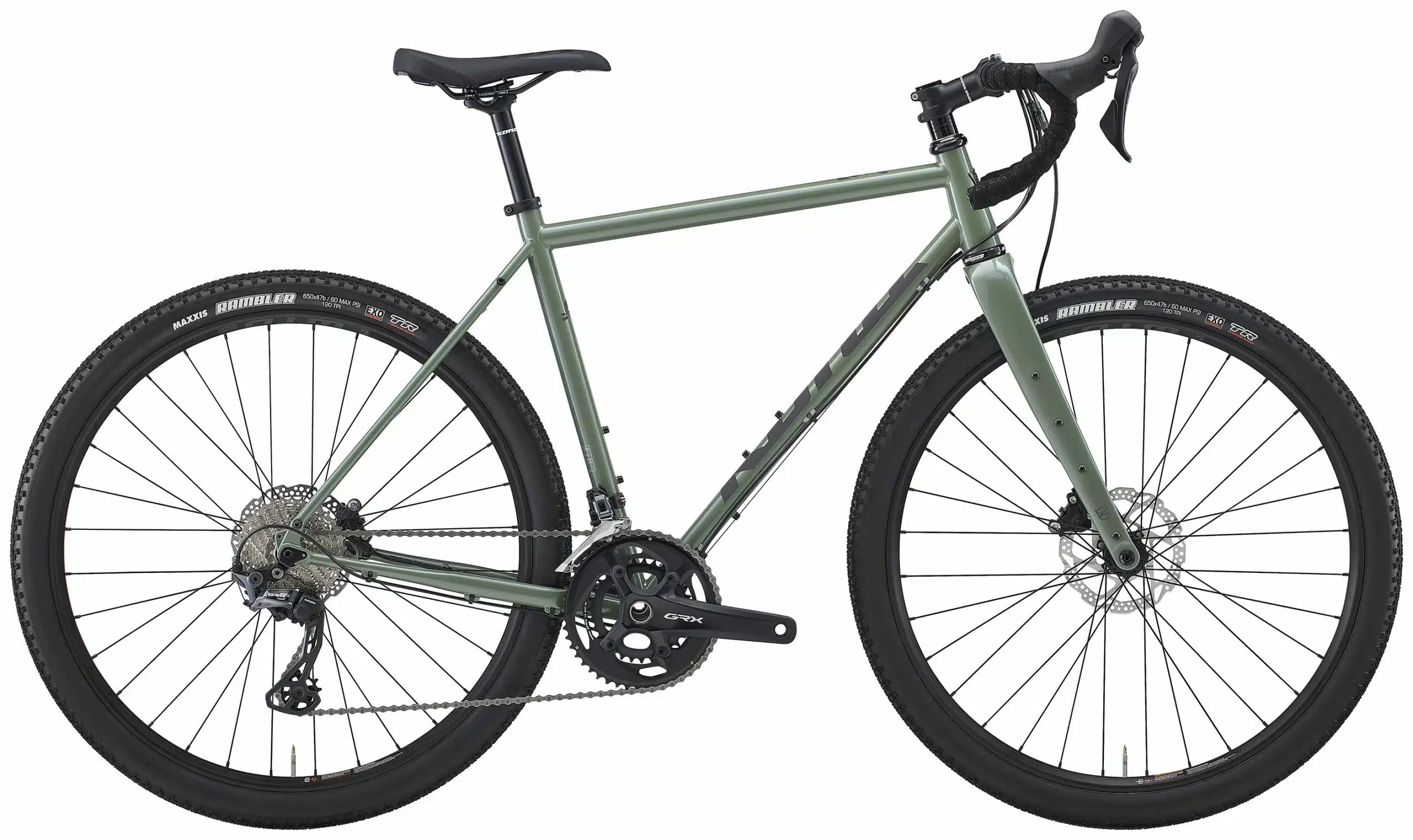
Gearing represents a pivotal consideration when selecting gravel bikes for touring applications. You must anticipate your intended terrain carefully. If your journey involves climbing numerous hills with a loaded bike, possessing a comprehensive gear spectrum becomes indispensable.
Proper gear variety enables comfortable ascents and efficient travel across flat terrains or downhills, though high-speed gearing importance diminishes in touring contexts. Crucially, many currently available gravel bikes may not offer appropriate gearing for steep climbs under heavy loads—presenting a significant limitation for serious touring applications.
Verifying your prospective bike’s gear range and terrain suitability represents a critical step before committing to any gravel bike for touring purposes.
Understanding Gear Range Fundamentals

Traditional touring bikes often feature triple chainring setups, offering gear ranges from 18″ to 117″. This range means the lowest gear (or “granny gear”) provides 18 inches of travel per pedal revolution—ideal for challenging climbs with heavy loads.
For gravel bikes intended for loaded touring, lower gear inch values prove preferable:
- 20″ or below: Ideal sweet spot for touring
- Above 25″: Generally considered suboptimal for peak loaded performance
Finding gravel bikes offering lowest gears around 18″ can be challenging, which explains why only select gravel bike models truly excel for touring purposes. Many models feature lowest gears around 25″, which may prove inadequate for touring needs, particularly on steep mountain trails while carrying bikepacking gear.
From personal experience, even bikes marketed as “touring/gravel/adventure” suitable can make steep ascents challenging when equipped with lowest gears around 25″.
Calculating Your Bike’s Gear Range

To calculate any bike’s gear range, multiply the smallest front chainring tooth count by the largest rear cog teeth. For example, the Kona Rove LTD, equipped with Shimano GRX 810 31/48t crankset and Shimano 105 11-34t 11-speed cassette, represents gearing more conducive to touring compared to many alternatives.
Using a Gear Inch Calculator—which accounts for tire size and width—helps visualize this range through comprehensive graphs and data.
This method simplifies the process of determining whether the gear range of the bike you’re considering is well-suited for touring.

I recommend visiting a website such as 99Spokes.com and looking up the bike you’re interested in. Scrolling down untill you find the specs section (build, groupset and wheels) Enter the required details of the bike into bikecalc.com to generate the gear inches results and proceed from there. Check if the granny gear is below 25 inches, or ideally, around 18 inches.

For the Kona Rove LTD, the calculation would be 48×11 for the highest gear, yielding 116 gear inches, and 31×34 for the lowest gear, resulting in 24 gear inches.
Ideal Gear Ratios for Touring
When assessing gear ratios for adventure riding and touring on a drop bar gravel bike, a 1:1 ratio is highly effective. Such low gears enable the rider to tackle steep inclines with a loaded bike more comfortably, preserving leg strength for long-distance journeys. A desirable gear range spans from 420% to 500%.
For the Kona Rove LTD, the gear range is determined by dividing the largest gear inches by the smallest and then multiplying by 100.
In this example, 110.92/23.35×100=475.03%, indicating a gear range difference of 475.03% between the smallest and largest gears. This range highlights the bike’s capability to handle diverse terrains and loads, making it an excellent choice for touring.
Gearing is a fundamental aspect to consider when selecting a gravel bike for touring. The right gear range can significantly affect your ability to climb hills and cover long distances efficiently.
By understanding and calculating gear inches and ratios, you can choose a bike that matches your touring needs, ensuring a more enjoyable and feasible adventure riding experience.
Essential Features for Touring Gravel Bikes
Beyond geometry and gearing—the primary considerations—several additional features prove essential for touring-capable gravel bikes.
Mounting Points and Practical Features
A bike frame equipped with eyelets for mounting both rear and potentially front racks for panniers is essential, marking a significant distinction from bikepacking setups. While not mandatory, inclusion of fender mounts and cargo cage mounts adds considerable value for touring applications.
Frame Material Considerations
Frame material plays a crucial role in touring performance. Traditionally, touring bikes utilize steel construction due to its exceptional durability and heavy load capacity, despite weight penalties. Modern advancements have produced lighter steel frames, often complemented by carbon forks in higher-end steel gravel bikes.
Alternative materials like carbon, aluminum, or titanium are available, but for traditional touring quintessence, steel remains unparalleled in suitability and reliability.
Component Considerations
While wheels, handlebars, and other components might seem secondary, they still contribute significantly to overall bike performance and comfort. Handlebars with flare are increasingly popular on gravel bikes, offering additional comfort during extended rides.
The choice between mechanical or hydraulic disc brakes represents another important consideration. Many experienced tourers argue that mechanical brakes are preferable for touring due to their simpler roadside serviceability—a crucial factor when traveling in remote areas.
Comprehensive Comparison: Touring Bikes vs. Gravel Bikes
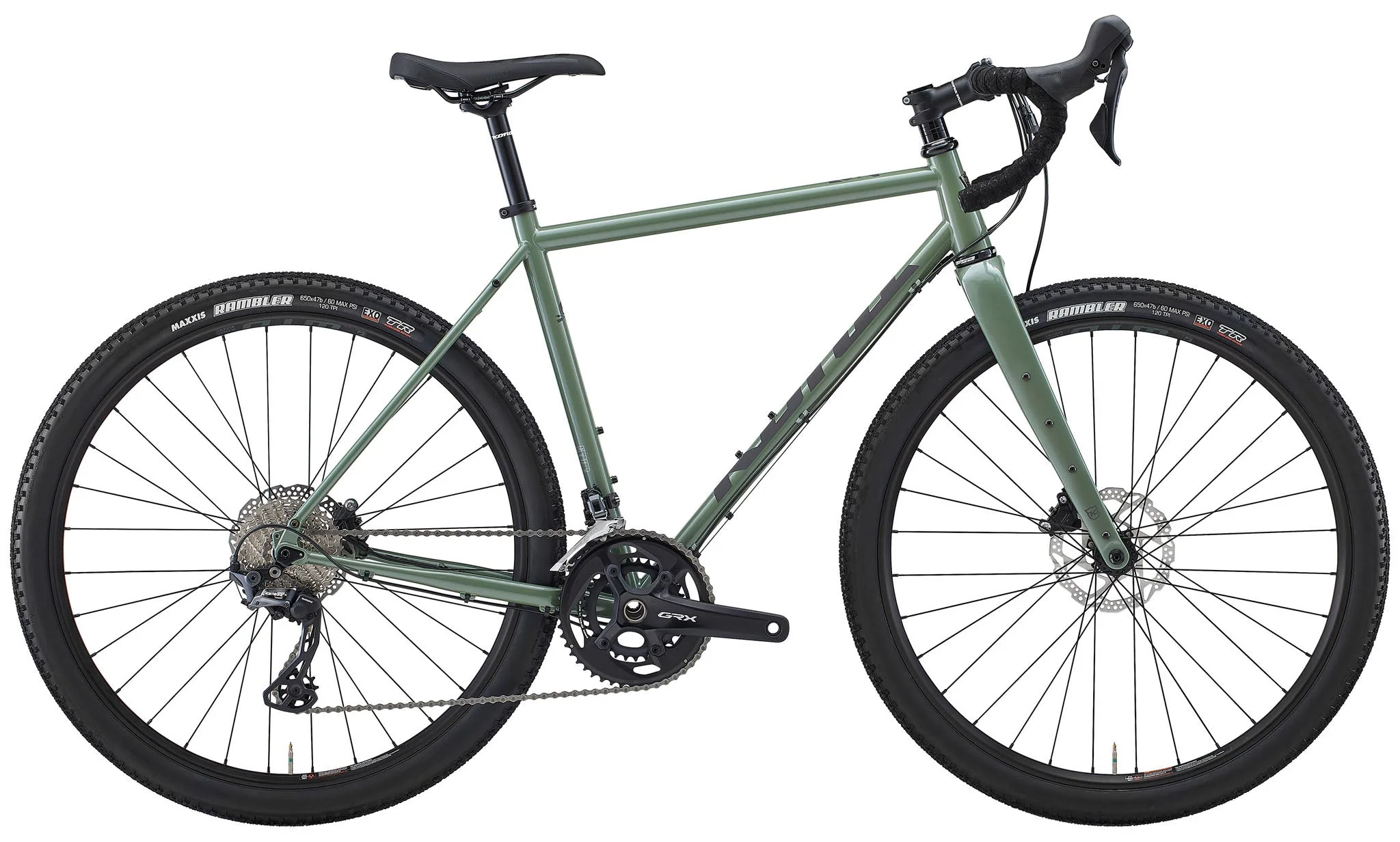
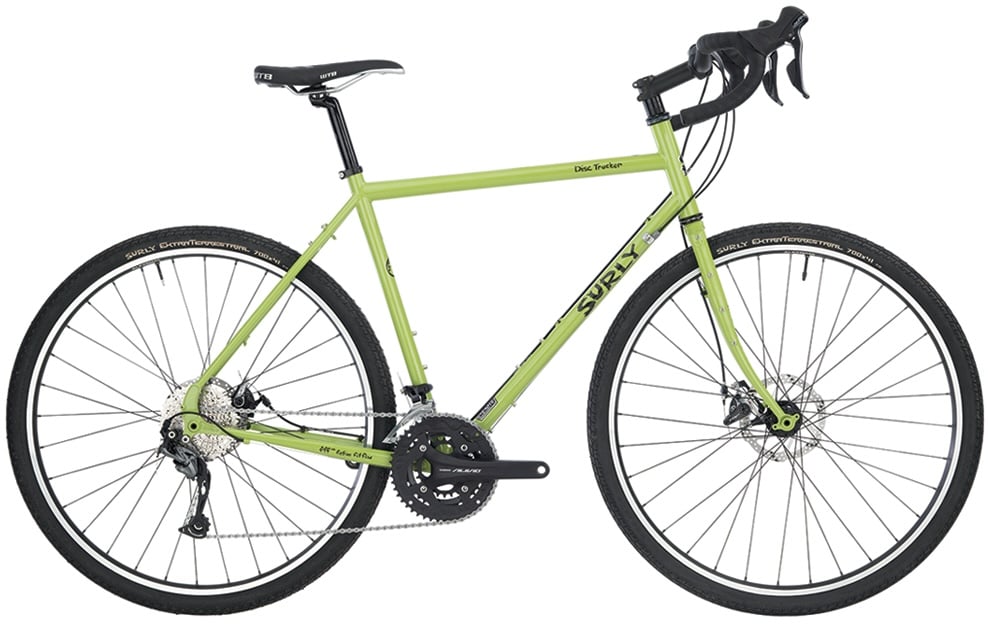
After examining geometry and gearing specifics for both touring and gravel bikes, distinctions extend well beyond these fundamental elements. Here’s a comprehensive breakdown of their differences:
Traditional Touring Bikes
Gearing: Optimized for tackling the steepest hills while maintaining respectable pace on flat terrains
Material: Predominantly steel construction, offering durability and forgiving ride quality when heavily loaded or traversing diverse global terrains
Wheels: Typically feature approximately 36 spokes, enhancing wheel strength for touring demands
Design Focus: Engineered as utility vehicles prioritizing comfort over speed for extended journeys
Features: Always equipped with eyelets for mounting racks and fenders. Premium models like the Surly LHT even include chainstay mounts for spare spokes
Geometry: Designed with less aggressive angles ensuring greater comfort during extended rides
Tire Compatibility: Capable of accommodating wider tires than road bikes, though some gravel bikes may support even wider options
Ride Quality: Touring bikes often perform optimally when loaded; riding unloaded can significantly alter handling characteristics
Gravel Bikes
Versatility: Designed for exceptional versatility, not limited to single riding types, making them nearly all-in-one bike solutions
Adventure Potential: Offer broader variety of adventure locations, including comprehensive off-road capabilities
Material Variety: Constructed from various materials including steel, aluminum, carbon, and titanium, catering to different preferences and requirements
Tire Width: Generally support wider tires designed for gravel conditions, rolling efficiently on both roads and off-road surfaces
Geometry: Can feature more aggressive geometry; crucial to compare with traditional touring bikes to understand practical differences
Weight: Often lighter than traditional touring bikes, enhancing appeal for riders seeking less burdensome options
Geometry Balance: The finest gravel bikes strike optimal balance between touring bikes’ elongated geometry and road bikes’ aggressive stance
All-Rounder Appeal: Ideal for cyclists seeking bikes that excel in various settings, making them perfect all-rounders for diverse riding styles
These distinctions highlight the unique strengths and intended applications of each bike type, helping you make informed decisions based on your specific touring goals and preferences.
This comprehensive guide provides the foundation for selecting the optimal gravel bike for your touring adventures. Remember that the perfect bike depends on your specific needs, intended terrain, and personal preferences. Take time to test ride potential candidates and ensure your choice aligns with your touring aspirations.
Best Gravel Bikes For Touring or Bikepacking
Now let’s take a look at some of the best gravel bikes for touring. In no particular order, these are some of my favorites. They offer a comfortable geometry, the ability to mount for racks and panniers, and are just all-around adventure machines!
These bikes are good for road and off-road touring. Which is what I assume you will mostly want to ride. Some of them are technically categorized as touring bikes or adventure touring bikes.
My belief is that they are also gravel bikes at heart as some have gravel-specific drivetrains and they have a place in this category.
Kona Rove LTD
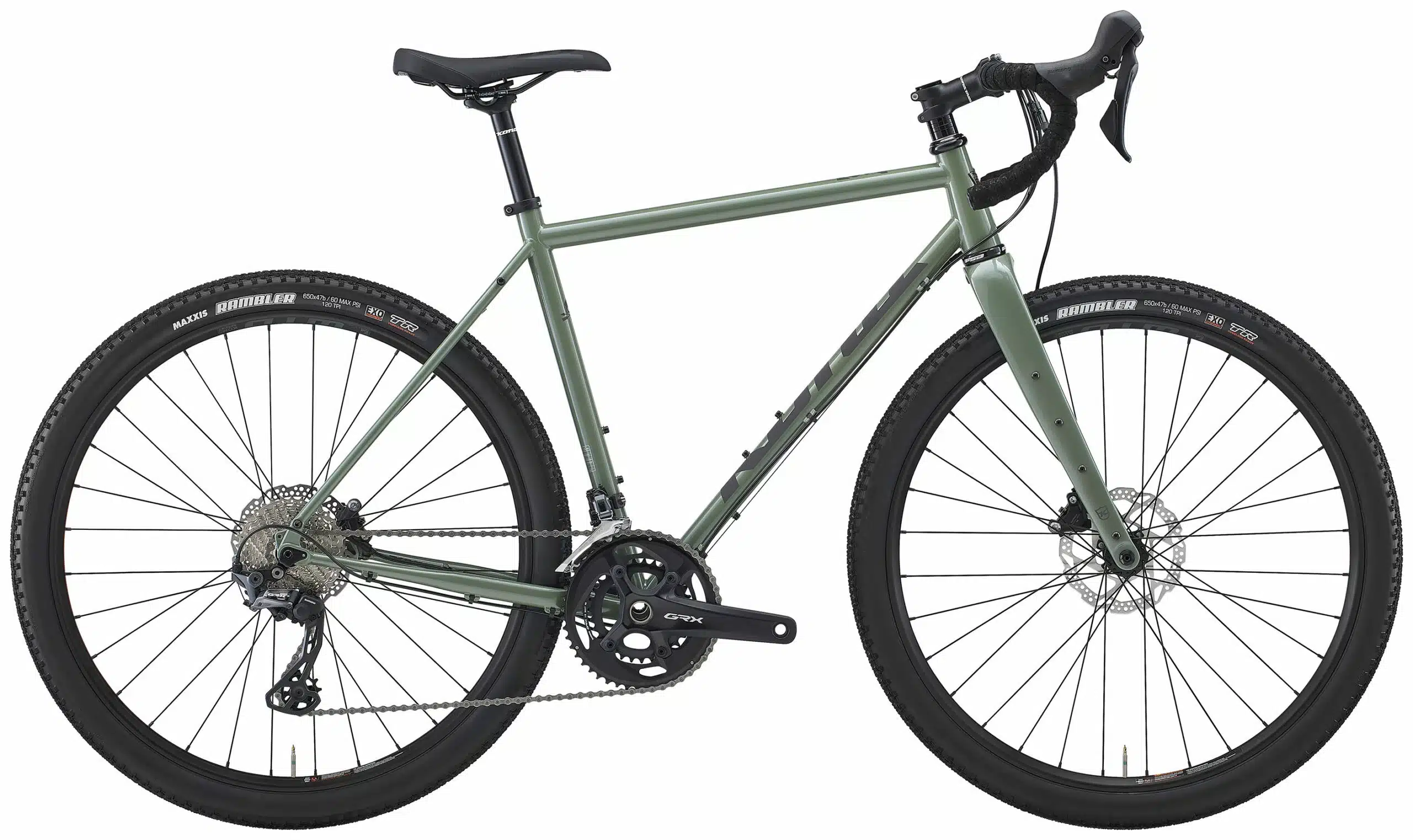
As highlighted, the Kona Rove excels as a gravel bike tailored for touring. It’s challenging to find alternatives that embody a seamless blend of touring and gravel biking characteristics, yet are fundamentally designed for touring. An example is the Rove’s older sibling, the Sutra, which I personally favor for my rides.
Despite the appeal of gravel bikes, they often fall short as complete substitutes for traditional touring bikes. However, there are commendable choices available in the market, similar to the Rove, which also doubles as an excellent commuter bike.
Niner RLT 9 Steel

Crafted for the thrill of adventure and unparalleled flexibility, the Niner RLT 9 Steel emerges as a robust contender, featuring a high-quality Reynolds 853 Steel frame coupled with an RDO carbon fork to enhance off-road comfort.
This model introduces several significant enhancements, including an advanced carbon fork, elegantly internally routed cables, flat mount disc brakes, and additional three-pack mounts on the fork legs for extra gear.
At its core, the bike boasts a durable Reynolds 853 steel frame, perfectly complemented by Niner’s cutting-edge RDO carbon fork, ensuring generous tire clearance for both 700 x 50mm and 650b x 2.0″ tires.
A standout feature for adventurers is the bike’s extensive range of mounting options, offering up to 26 unique points for attaching racks, fenders, and bolt-on accessories, catering to every possible need on the trail.
Designed with the thrill-seekers in mind, this bike is also equipped for dropper post integration, enhancing the ride on challenging terrains.
Niner provides a variety of purchasing options for the RLT 9 Steel, ranging from a frame-only choice to a comprehensive selection of complete setups. Pricing for these configurations starts just under $3,000 and goes up to around $6,000 USD, accommodating a wide range of budgets and preferences.
Lightweight Carbon Touring Gravel Bikes
Looking for light touring bike options – these are mostly considered carbon touring bikes or more touring optimised and oriented gravel bikes.
Salsa Warbird Carbon AXS Wide
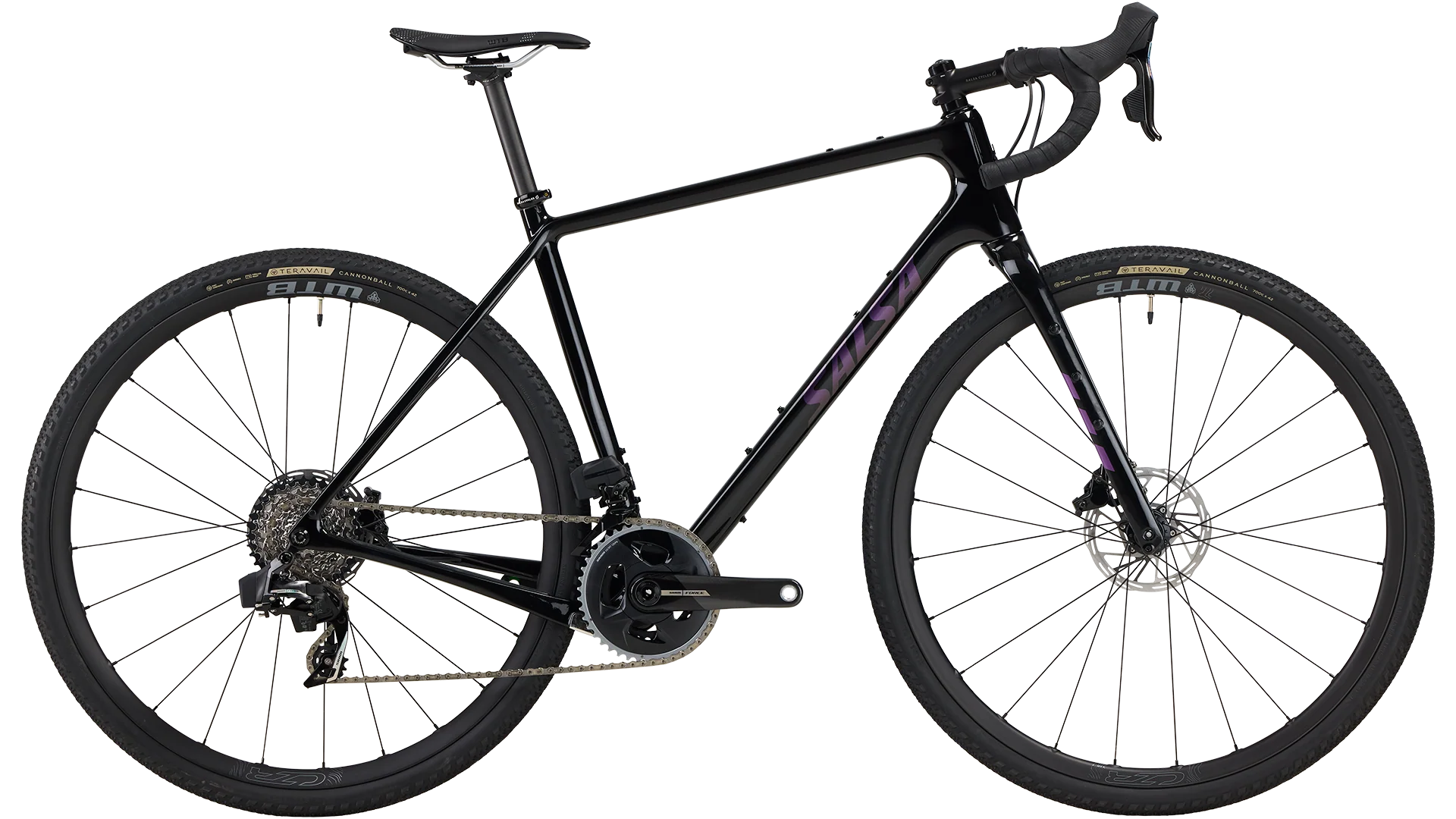
Weight: 8.26 kg (18.2 lbs) | Price: From $3,299
The Salsa Warbird continues to hold the crown as the lightest touring-capable bike available. The top-spec Carbon AXS Wide model achieves its featherweight status through high-end carbon construction and SRAM’s wireless electronic shifting. With clearance for 700x45c tires and mounting points for the Salsa Wanderlust rear rack, it transforms from gravel racer to fast tourer seamlessly.
The Warbird’s 430mm chainstays (medium) provide excellent balance between stability and agility, while the 69.6mm trail figure ensures predictable handling even when loaded. This bike excels at credit card touring and supported rides where minimal gear is required.
2. Giant Revolt Advanced Pro
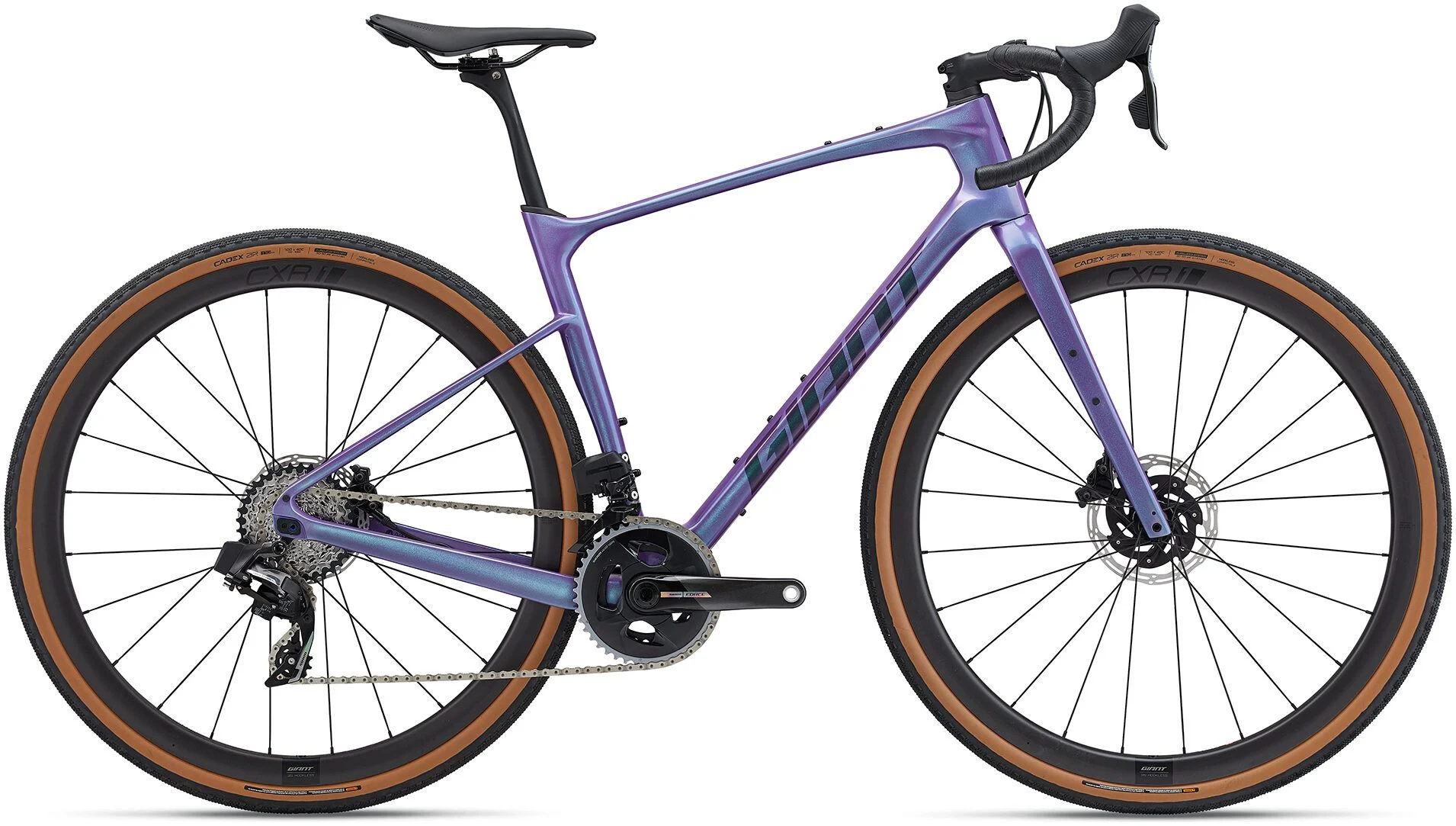
Weight: 8.3 kg (18.3 lbs) | Price: From $3,599
Giant’s Revolt Advanced Pro has proven itself through rigorous testing, with one reviewer noting it was “truly put through the wringer” over 500 miles of challenging terrain. The carbon frame and fork construction keeps weight low while providing excellent vibration damping for long-distance comfort.
The Revolt’s slightly shorter 425mm chainstays make it feel more responsive than some touring bikes, though this comes at the cost of some loaded stability compared to longer-wheelbase designs. Its proven track record and global availability make it a practical choice for touring in remote areas.
Bombtrack Hook EXT-C

Weight: 9.24 kg (20.7 lbs) | Price: Approximately $3,900
The Hook EXT-C stands out as one of the most genuinely adventure-ready bikes in this category. Bombtrack describes it as the bike “to take you to wild places fast,” and it delivers with comprehensive mounting points including fork, top-tube, rear rack, and bottle mounts.
With 650b wheels and generous tire clearance, the Hook EXT-C excels at technical terrain while maintaining touring practicality. It represents the perfect middle ground between the ultra-light Salsa Fargo and traditional heavy-duty touring bikes, offering serious adventure capability without excessive weight.
Salsa Cutthroat
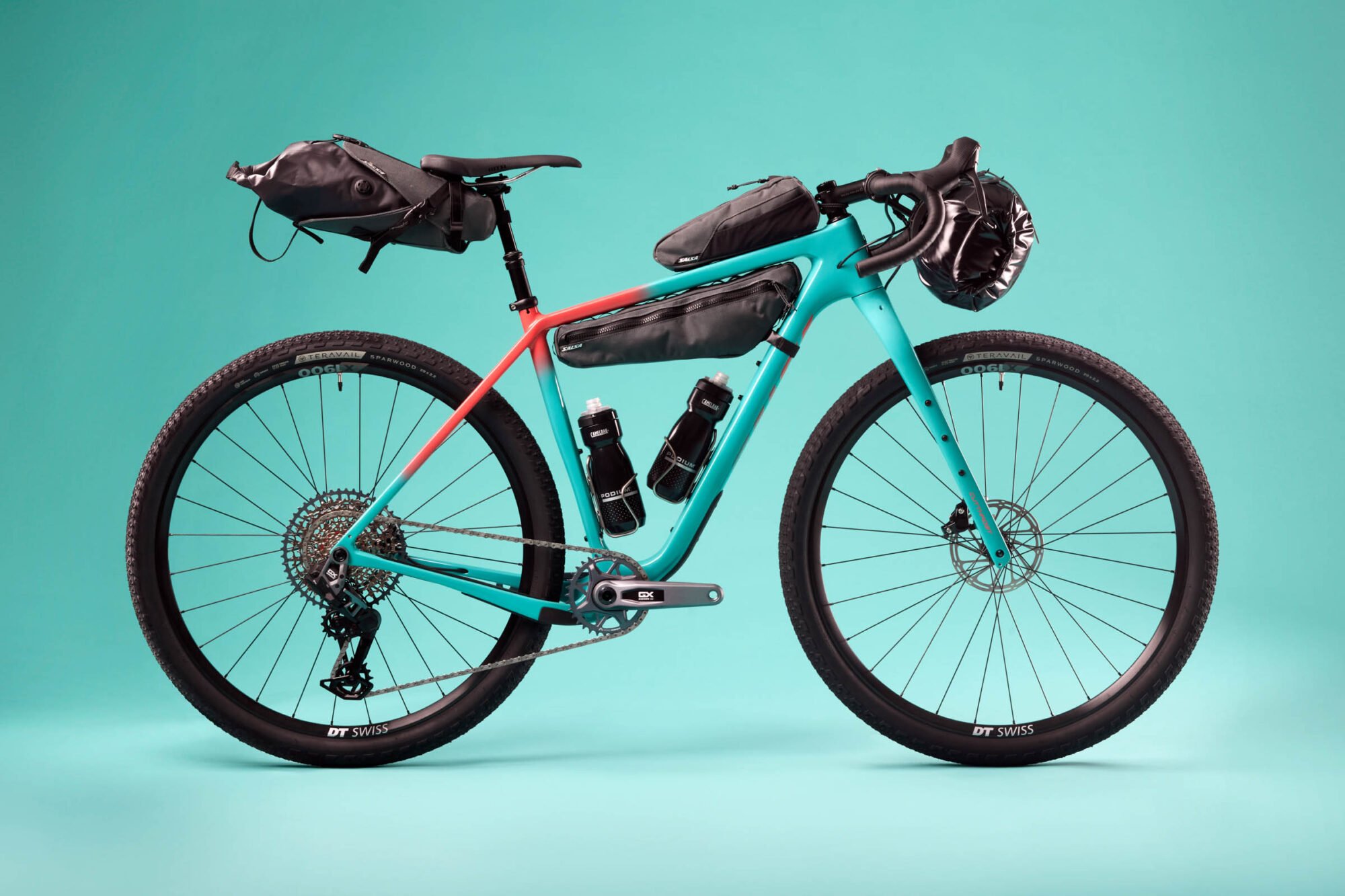
Weight: 9.71-11.11 kg (21.4-24.5 lbs) | Price: From $2,899
Described as a “drop-bar mountain bike, ultra-endurance mixed surface machine, tour divide inspired, bikepacking rig,” the Salsa Cutthroat represents the ultimate fast touring bike for rough terrain. Built with 29″ wheels and the ability to ride comfortably over huge distances with gear, it’s one of the best recommendations in the carbon touring bike category.
The Cutthroat’s mountain bike-inspired geometry and long chainstays (445mm) provide exceptional stability when loaded, while the large-volume tires smooth out rough terrain. For riders planning technical adventures or rough-road touring, few bikes match the Cutthroat’s capability.
Salsa Fargo Carbon
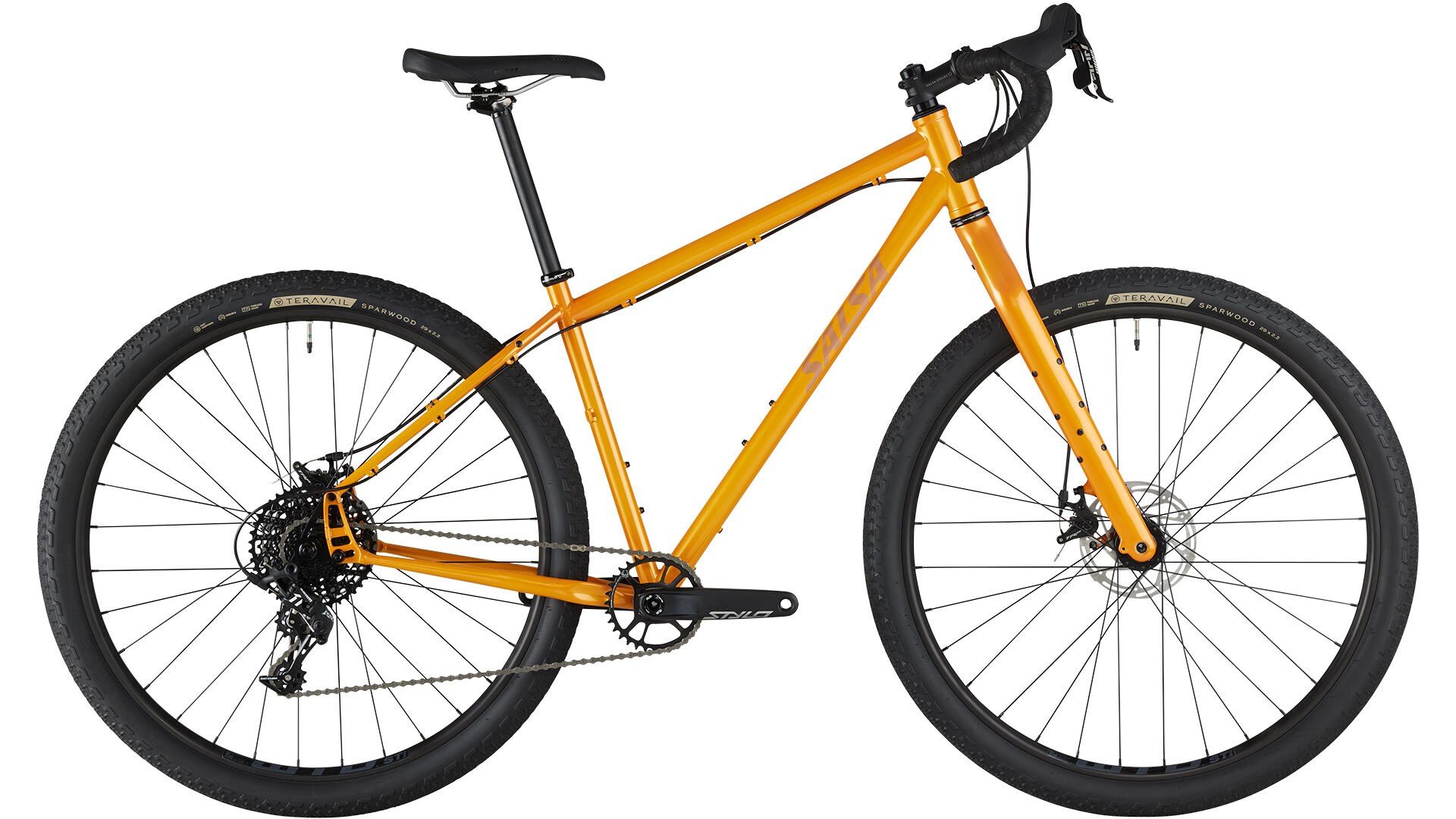
Weight: 11.9 kg (26.2 lbs) | Price: From $2,599
The Salsa Fargo Carbon represents the heaviest bike in our lightweight touring category, but for good reason. As a truly capable adventure/touring bike, it’s ideal for trail riding and dirt road touring with 29″ x 2.6″ Maxxis Ikon tires providing genuine off-road capability.
With super upright geometry, long chainstays (455mm), and large trail (88.2mm), everything about the Fargo is purpose-built for loaded riding. While it may be the heaviest carbon touring bike on this list, it’s still significantly lighter than traditional steel touring bikes while offering superior capability for rough terrain.
Genesis Croix de Fer
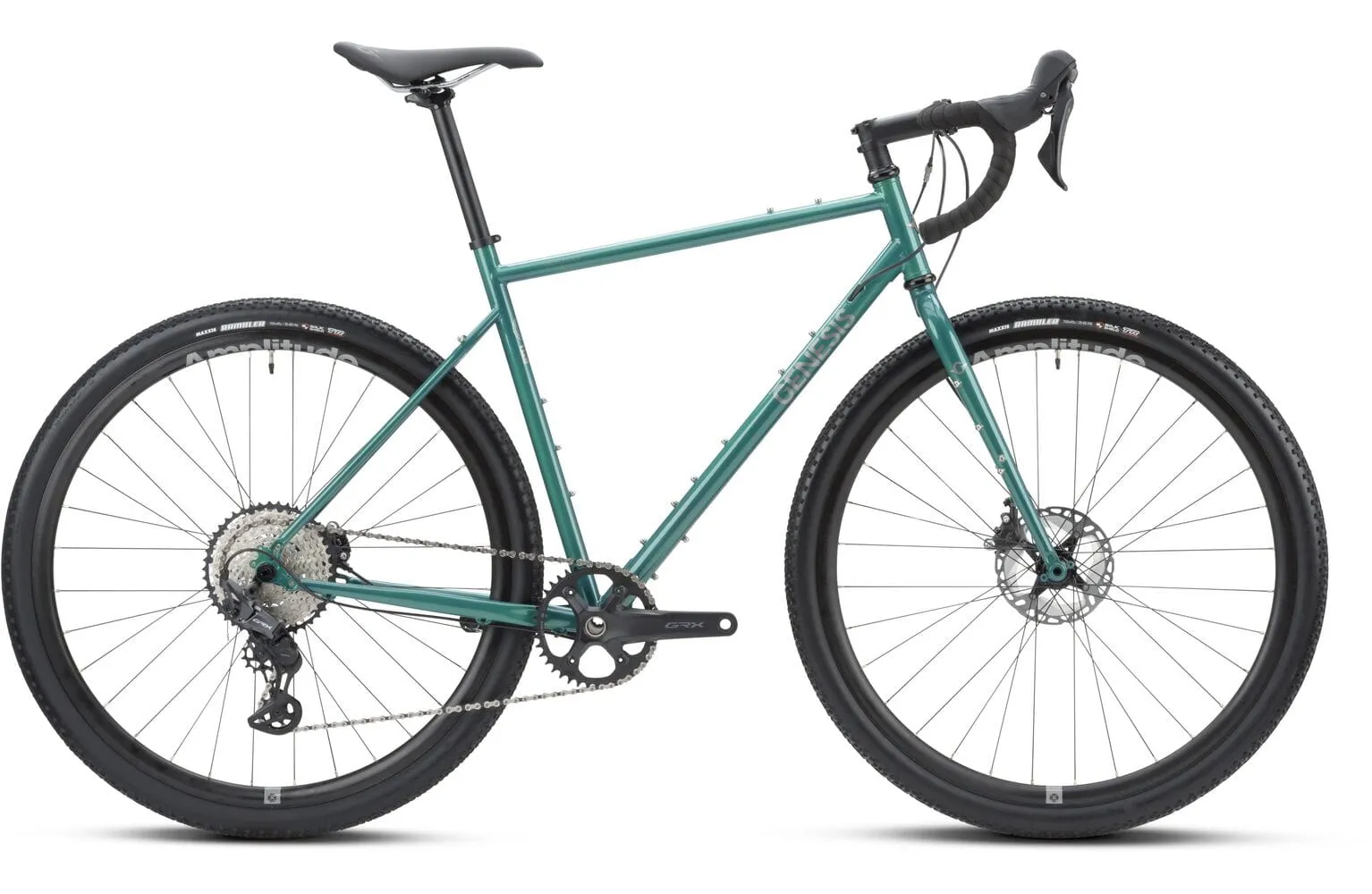
Weight: 11-12 kg (24.3-26.5 lbs) | Price: From $1,800
The Genesis Croix de Fer “has been around since the rise of modern gravel riding” and “was never truly pitched as a gravel bike though, rather a one-bike solution that was equally aimed at commuters as it was touring, road riding and gravel”. This versatility has made it a cult favorite among touring cyclists.
While heavier than carbon options, the Croix de Fer offers the durability and repairability that many touring cyclists value for long-distance adventures. Its steel construction provides excellent ride quality and the confidence that comes with traditional touring bike materials.
Canyon Grizl
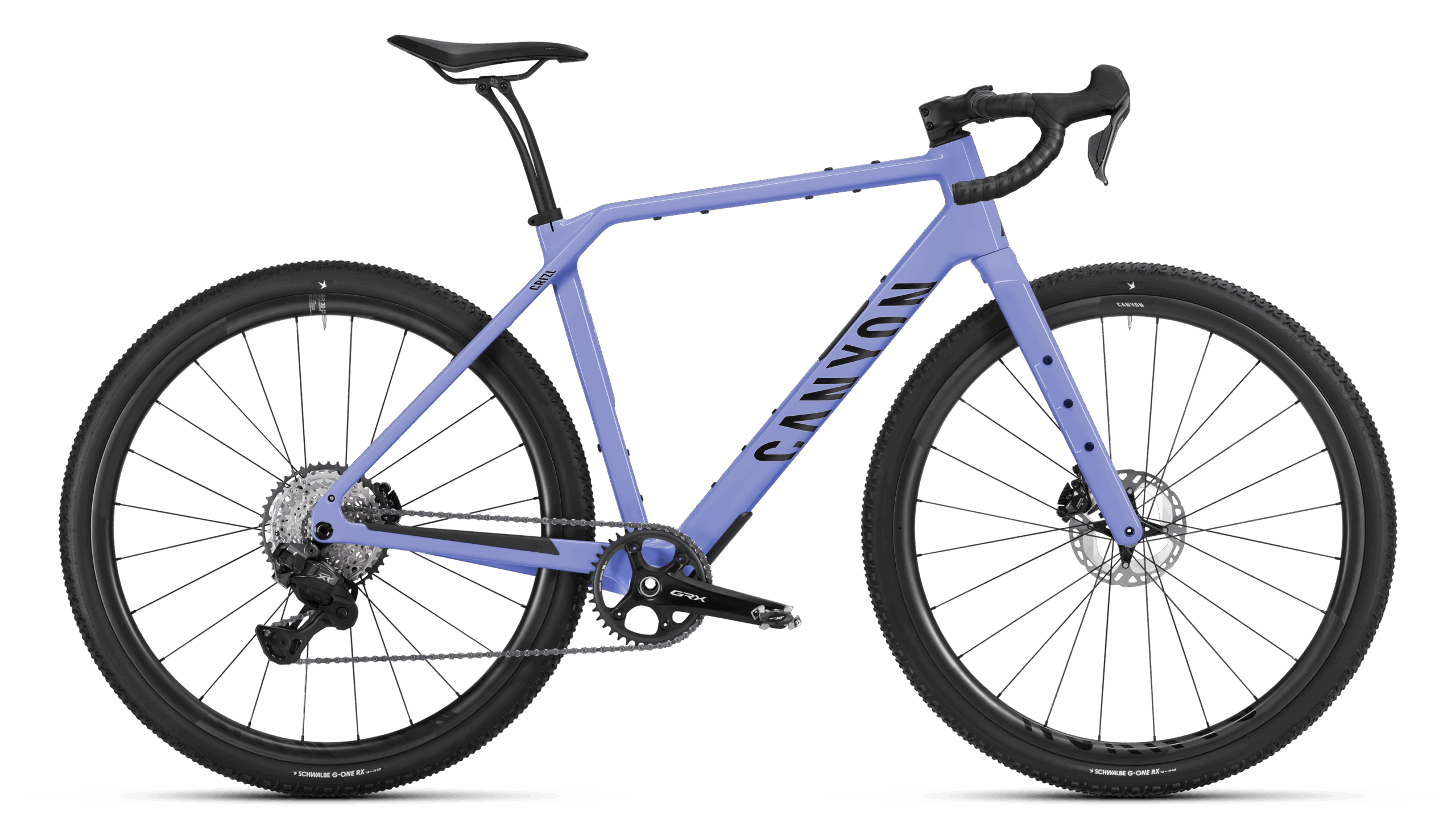
Weight: 9.2-10.5 kg (20.3-23.1 lbs) | Price: From $2,299
The Canyon Grizl “is an all-around great ride suited for all types of adventures, whether it be a casual after-work gravel ride, commuting around town, or a multi-day bikepacking adventure”. Canyon’s direct-to-consumer model provides excellent value, though it may limit service options in some regions. More of a bikepacking specific gravel bike.
The Grizl’s practical approach includes multiple mounting points and clearance for wide tires, making it well-suited to both bikepacking and traditional pannier-based touring. Its balanced geometry works well for riders seeking versatility over specialization.

